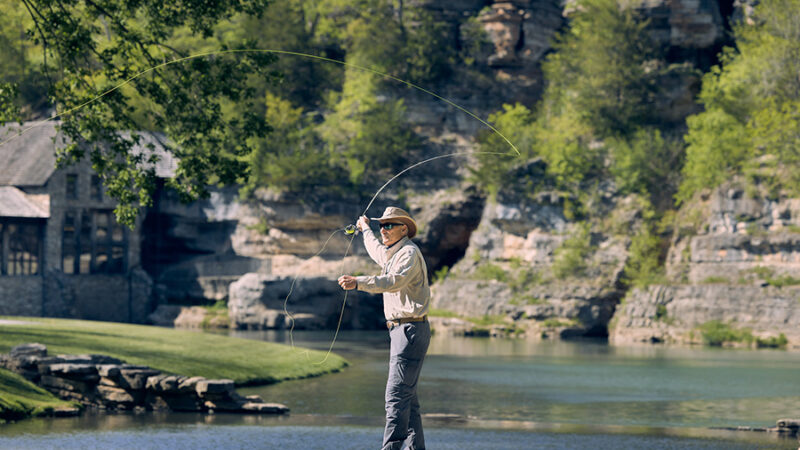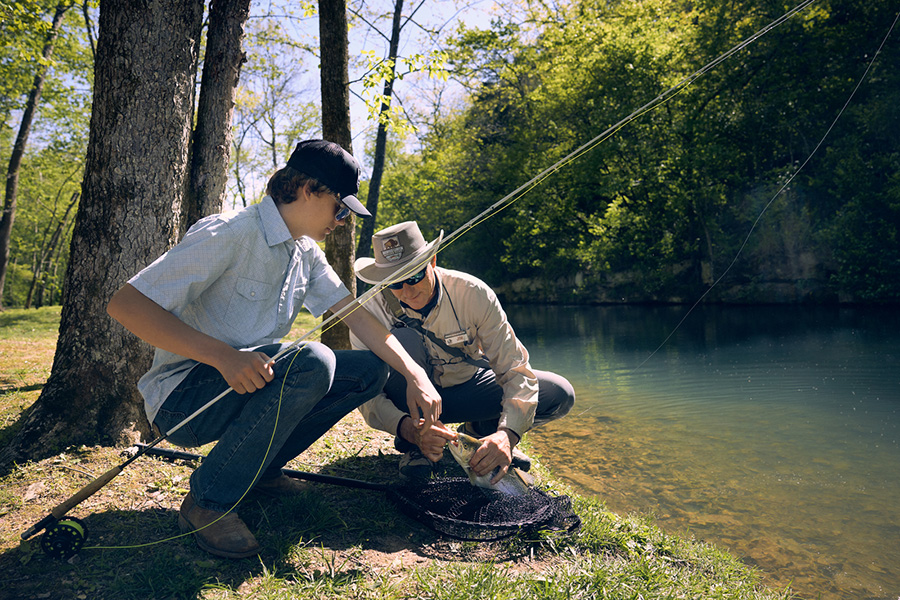Dogwood Canyon Blog
I Wonder… Why do Ethical Fishing Practices Matter?
February 1, 2025

Fishing has become one of the most popular pastimes for people all around the country, but the Ozarks offer unique opportunities thanks to its several lakes, rivers, springs, and more. For centuries, people fished to feed their families and communities. It was a primary food source for anyone living near water and became a popular item offered at trading posts as settlers moved west in the early years of U.S. history.
Fishing practices have evolved from being only an activity of necessity to a hobby for some and a career for others. Hobby fishing specifically has become increasingly popular in the United States, and especially in Missouri where fishermen and women can fish up to 200 native species, “plus several more species that are non-native but have established reproducing populations,” according to the Missouri Department of Conservation.
Rainbow trout are a great example of a non-native species that are popular with anglers. They are distinctive for the bright pink stripe along their speckled green skin. Though originally native to the Pacific Northwest, that same article from the Missouri Department of Conservation states: “Trout wouldn’t exist in Missouri or many other Midwestern states if they weren’t produced in hatcheries. Yet, trout fishing is one of the most popular outdoor recreations in Missouri.”
Trout fishing opportunities at Dogwood Canyon are no exception, bringing guests from all over the country to the canyon’s pristine, teal-colored water. The guides at Dogwood Canyon can take new– and experienced – anglers along Little IndianCreek and teach them all about the importance of ethical fishing and hatcheries, proper catch-and-release practices, and much more, providing a deeper connection to this and all marine species and their impact on the natural world that immediately surrounds us.

Wonders of Wildlife also allows guests to connect with nature and wildlife with its mission of conservation education. The Community Pond exhibit is particularly impactful, allowing visitors to see native species like the paddlefish – which are classified as vulnerable by the International Union for Conservation of Nature and Natural Resources (IUCN) – gar, critically endangered pallid sturgeon, and catfish.. These fish can often be overlooked as guests explore the aquarium due to their duller scale colors, but taking a moment to watch these incredible freshwater fish and learn about the species with our interactive electronic stands can encourage guests to make sustainable decisions when heading out to the water in the future.
To make sure you are making sustainable decisions, you can check fishing license laws if you choose to fish on public land and purchase any tags you may need, use proper catch-and-release gear, like circle or barbless hooks, and no matter, what kind of outdoor activity you partake in, you can leave no trace by taking home all tackle brought with you and throwing away trash in proper receptacles.
As Black Elk, the Oglala Lakota holy man, once said, “All beings are to be respected, for all have souls. In truth, we depend on all of the creatures in this world. For in order to survive, we humans must consume plants and animals – life must be taken so that we may live. It is only with awareness that we learn humility and find balance.”
